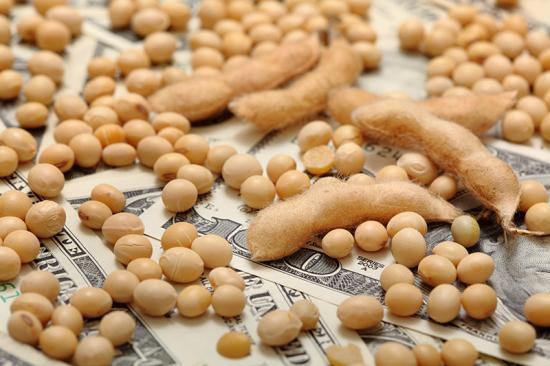This was a choppy, low-volume day of trade, and now just two days until the major USDA May Supply/Demand reports.
December corn rallied on planting delays and extended forecasts that now look wet for next week.
At the close, July corn closed up 3¢, with December up 8¢. July soybeans closed 7¢ higher with November soybeans up 8¢. July CBOT wheat was unchanged, KC wheat is up 11¢, and Minneapolis wheat closed up 5¢ to 9¢.
Livestock futures closed mixed. June Hogs closed up 27¢ at $101.57, June Cattle closed down $1.15 at $132.40, and August Feeders closed down $2.37 at $171.85.
Tomorrow at 8:30 am, the US Bureau of Labor Statistics will release its report. I will be watching the US inflation for April.
The estimate is that the April inflation rate will come in at 8.1% compared to 8.5% last month. This inflation report will have a major impact on the US stock and bond market. A higher-than-expected inflation rate in the report will take interest rates and the US dollar higher and the stock and commodity markets lower. The opposite will happen if the inflation rate comes in lower than expected.
In the outside markets, crude oil is down $3.60 per barrel. The stock market was lower early in the day, but at this hour all of the major indexes have turned higher.
MID-MORNING COMMENTS: 11 AM
This has been a very choppy day. After trading lower in the overnight trade, the grain markets turned higher until about 10 am and then prices again pulled back to test the lows made last night. Wheat prices are higher again.
At this time July corn is down ½¢, with December up 1¢. July soybeans are now 3¢ higher with November soybeans up 4¢. July CBOT wheat is 1¢ lower, KC wheat is up 5¢, and Minneapolis wheat is now up 4¢.
The key chart price levels that need to hold are $7.80 on nearby corn and $15.80 for July soybean futures. It is interesting to watch the strength in the May corn and soybean futures as we approach the last trading day on Friday.
Fundamentally, corn futures should find good support on any setback. Earlier I had projected that US farmers would plant 90.5 million acres of corn. I now think it will be closer to 89 million acres.
The key area to watch is the far northwestern Corn Belt, especially North Dakota, South Dakota, and Minnesota. In the 2022 March Prospective Planting Report, North Dakota was estimated to plant 3.6 million acres of corn, South Dakota was estimated at 6.2 million acres, and Minnesota was estimated at 7.8 million acres.
The final corn planting date for crop insurance in North Dakota is May 25 for most of the state. The farmers who planted corn in the northern Corn Belt all the way into June 2019 will not ever do that again. They ended up with low test weight corn and low yields.
In the outside markets, crude oil has given up the early gains and is now down $2.80 per barrel early today. The stock market was higher in the overnight trade and has now turned lower. All of the major indexes are making new lows again today.
MORNING COMMENTS: 9 AM
The Corn Belt is staying too wet up north, and it’s too dry in the southwest Plains. Some areas in between look great. The USDA Crop Progress report showed corn planting behind normal and even with a big push this week, it is likely to stay way behind normal in the report next Monday. For spring wheat, it is even worse.
The USDA Crop progress report on Monday showed corn plantings at 22%. This is below what the trade had expected and is behind last year’s pace of 64% and the five-year average of 50%. The report showed that just 20 million acres of corn had been planted compared with 45 million acres in the five-year average. Soybean planting advanced to 12%, which compares with the five-year average of 24%. Spring wheat plantings came in at 27%, which is 20% behind the five-year average and the forecast is wet again this week for North Dakota. I now think North Dakota alone could have 2 million acres prevent plant.
In the early grain trade, after starting out lower, July Corn is now up 1½¢, July soybeans are trading 8¢ higher, and wheat futures are 3¢ to 8¢ higher.
In the outside markets, crude oil is down 10¢ per barrel, the US stock market has turned higher, and livestock futures are steady to higher.
About the Author: Al Kluis has been a commodity advisor and broker since 1976. Kluis is an introducing broker with Wedbush Futures and writes a column, YourProfit, which appears in every issue of Successful Farming magazine. Kluis has published two books on commodities trading and is commonly quoted in major publications including the Wall Street Journal. He is also a featured speaker at commodity conferences nationwide. Kluis is a frequent market analyst for the Linder Farm Radio News Network. A Minnesota farm boy, Kluis was awarded his degree in ag economics from the University of Minnesota in 1974, after which he was executive director of the Minnesota Soybean Association before entering the markets full-time. His family of him still farms in southwest Minnesota, and Kluis enjoys helping with fieldwork when the markets allow.
